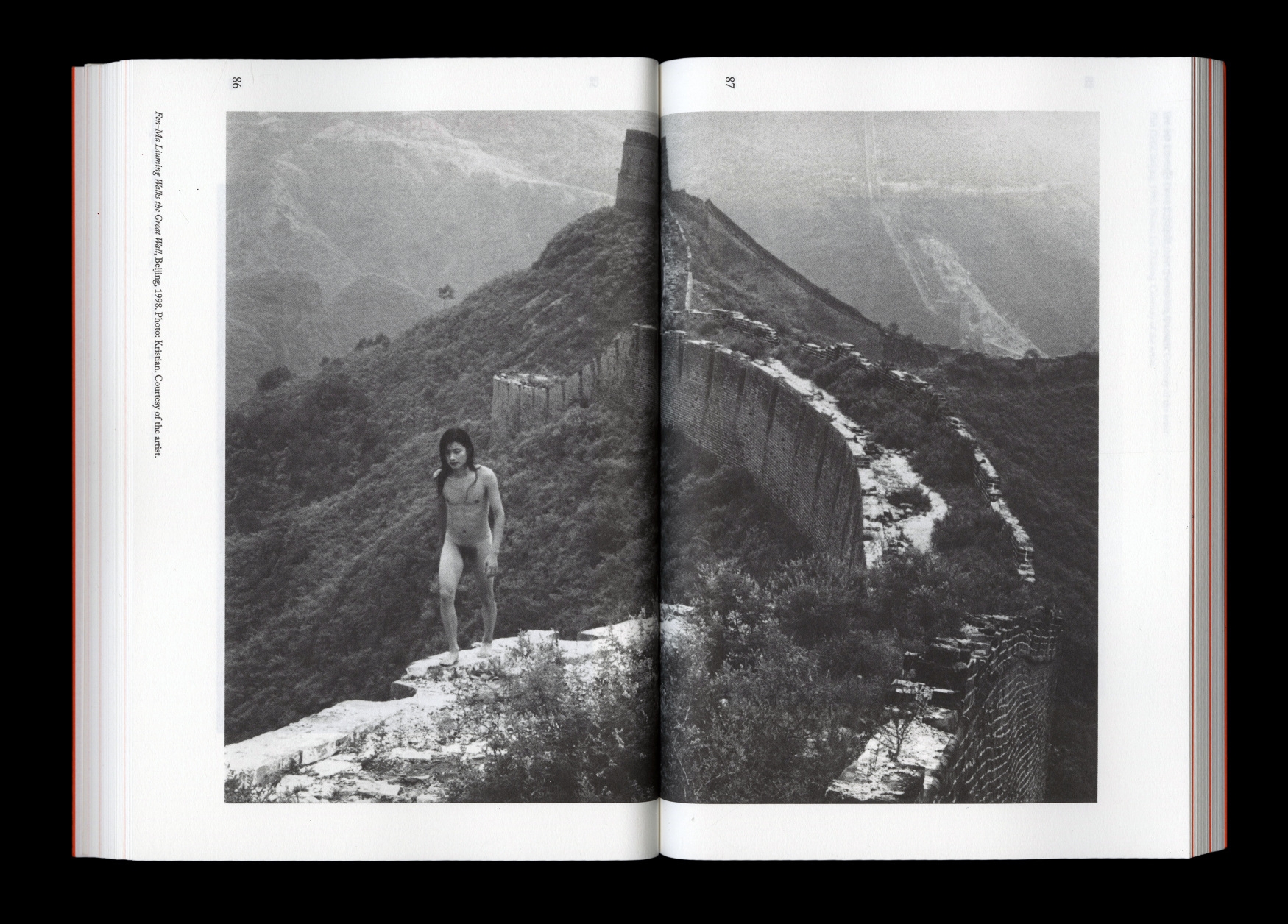Performance Histories from East Asia 1960s–1990s: An IAPA Reader, edited by Victor Wang, DRAF Curators’ Series, free (softcover)
In this reader accompanying the latest exhibition in the David Roberts Art Foundation’s Curators’ Series, Institution of Asian Performance Art (IAPA), editor Victor Wang puts forward a narrative for the development of performance art in Asia as distinct from the history of its Western equivalent.
Each of the four chapters (organised geographically, and presenting photographic documentation of the works alongside one or two previously published essays) makes clear that artists working within the sociopolitical contexts of their own countries engaged in performance for different reasons. In Japan, the Expo ’70 Destruction Joint-Struggle Group (made up of artist collectives including Zero Jigen and Kokuin) took to the streets in protest at the Westernisation of the country’s artistic culture; in China, Ma Liuming presented a body that transgressed Chinese society’s strict gender binaries; in Korea, artists recognised their bodies as sites of political conflict under the oppressive regime of Park Chung-hee; in Taiwan, performance was used as a means of expressing and exploring a national identity.
There are, however, aspects of performance history in East Asia that are shared across the countries. The reader brings to attention the importance of documenting performances (particularly in Reiko Tomii’s essay on Japanese photographer Hirata Minoru, and Joan Kee on performance in South Korea), and the ways in which we might consider this to be as important as the performance itself. While the act, in front of an audience, conveys a sense of urgency because it happens in a specific moment (and cannot be reenacted in the same context), it’s the recording of the performance, through photography, that brings it to a wider audience. This is explored in Tomii’s text, which presents the performances (by groups like Hi-Red Center, or individuals such as Yoko Ono and Ushio Shinohara) and Minoru’s photo-documentation as existing symbiotically. The performances allowed Minoru to make ‘Photo Art’ that was then published in the Japanese mass-media, which led to a greater awareness of performance art.
There are also other key insights into the specific political tensions surrounding performance in East Asia. In South Korea, under the rule of Park Chung-hee following his military coup in 1961, state-sanctioned art extended to media such as ink painting or sculpture and forms such as minjung (‘people’s art’), all produced within government-approved institutions. That artists working outside of these were subject to surveillance or imprisonment is fairly well known, but Joan Kee illustrates a much more complex environment. In her 2015 essay ‘Why Performance in Authoritarian Korea?’, she writes that Park’s government was also keen to ‘improve its international standing’, and thus allowed those ‘transgressive’ artists to exhibit work abroad at biennials, creating a situation that was ‘confusing and often dangerous’.
While he rightly justifies the importance of research into the form from a non-Western perspective, Wang’s introductory essay would benefit from providing a little more explanation of, and context to, his references. For example, he mentions influences from Buddhism, Taosim and the I Ching, but doesn’t go on to set out examples of how their concepts of ‘ephemerality, emptiness, chance, rituals…’ inform performance history in East Asia. In this sense, the introduction to Performance Histories glosses over cultural influences, and this is compounded by his vague references to historical events, dictatorships and authoritarian governments, all of which would profit from a simple timeline, if only to locate these in time and place. Nevertheless, the collection of texts presented here offer interesting snapshots into various stages of the development of East Asian performance art, and benefits from a thematic rather than chronological approach to its history.
From the Winter 2018 issue of ArtReview Asia
